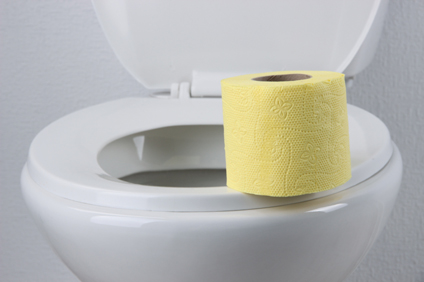The practice of waterbirth, widely beloved of natural childbirth and homebirth advocates, is nothing more than giving birth in a gigantic fecally contaminated toilet.
There is no difference at all.
Wait! Scratch that; there is one difference. Toilet bowl water is room temperature, leading to slower growth of microorganisms. Birth pools are heated to body temperature, the favorite temperature of harmful bacteria and the one that allows the bacteria to multiply to pathogenic levels.
The American Academy of Pediatrics’ Committee on Fetus and Newborn in conjunction with the American College of Obstetricians and Gynecologists has just updated its position on waterbirth. Nothing has changed since the previous edition published in 2005, except in the intervening years, more cases of perinatal death and injury have been reported.
The scientific evidence for giving birth in water has failed to demonstrate any benefit, but case reports have demonstrated a wide variety of risks:
Some of the reported concerns include higher risk of maternal and neonatal infections, particularly with ruptured membranes; difficulties in neonatal thermoregulation; umbilical cord avulsion and umbilical cord rupture while the newborn infant is lifted or maneuvered through and from the underwater pool at delivery, which leads to serious hemorrhage and shock; respiratory distress and hyponatremia that results from tub-water aspiration (drowning or near drowning); and seizures and perinatal asphyxia. (my emphasis)
But wait! Barbara Harper, the nurse who is the doyenne of American waterbirth claims that infants can’t breathe in the contaminated bathwater because the “diving reflex” prevents them from gasping.
Not so, according to the AAP and ACOG:
Although it has been claimed that neonates delivered into the water do not breathe, gasp, or swallow water because of the protective “diving reflex,” studies in experimental animals and a vast body of literature from meconium aspiration syndrome demonstrate that, in compromised fetuses and neonates, the diving reflex is overridden, whichleads potentially to gasping and aspiration of the surrounding fluid.
We know that fetal breathing movements (aspirating amniotic fluid into the lungs and out again) is a part of normal lung development. If there is not enough amniotic fluid, the baby’s lungs will be fatally underdeveloped (Potter’s Syndrome). And the presence of fetal breathing movements in utero is a sign of fetal well being when seen on ultrasound. So we know that babies breathe in and out in the uterus, even when they are well oxygenated, and we know that babies who are oxygen deprived breathe meconium into their lungs. It is the height of foolishness to claim that they won’t breathe fecally contaminated birth pool water into their lungs as well.
Most mainstream media outlets have covered this story by providing the facts. Unfortunately, the health column for WBUR, the Boston affiliate of NPR, is written by a doula, Rachel Zimmerman, among others. Zimmerman revealed her bias by “balancing” the scientific evidence from the AAP and ACOG with the blithering of Barbara Harper, as if a layperson who just makes stuff up is the equivalent of balance.
There’s currently a vigorous debate going on in the comments section, and I predict it is only a matter of time before Zimmerman starts deleting comments.
The bottom line is that waterbirth is no different from delivering in a giant toilet warmed to the preferred temperature of fecal bacteria. It is unnatural (no primates give birth in water); it is dangerous; and it is ludicrous to claim otherwise.
I have a simple question for waterbirth advocates:
Would you completely immerse your head (eyes open, of course) in the fecally contaminated bloody water of a birth pool in the aftermath of a birth?
I have a second question:
If you wouldn’t for a moment contemplate immersing your head in a pool of water with feces floating in it, why do you think it is a good idea to force your baby to do so?


